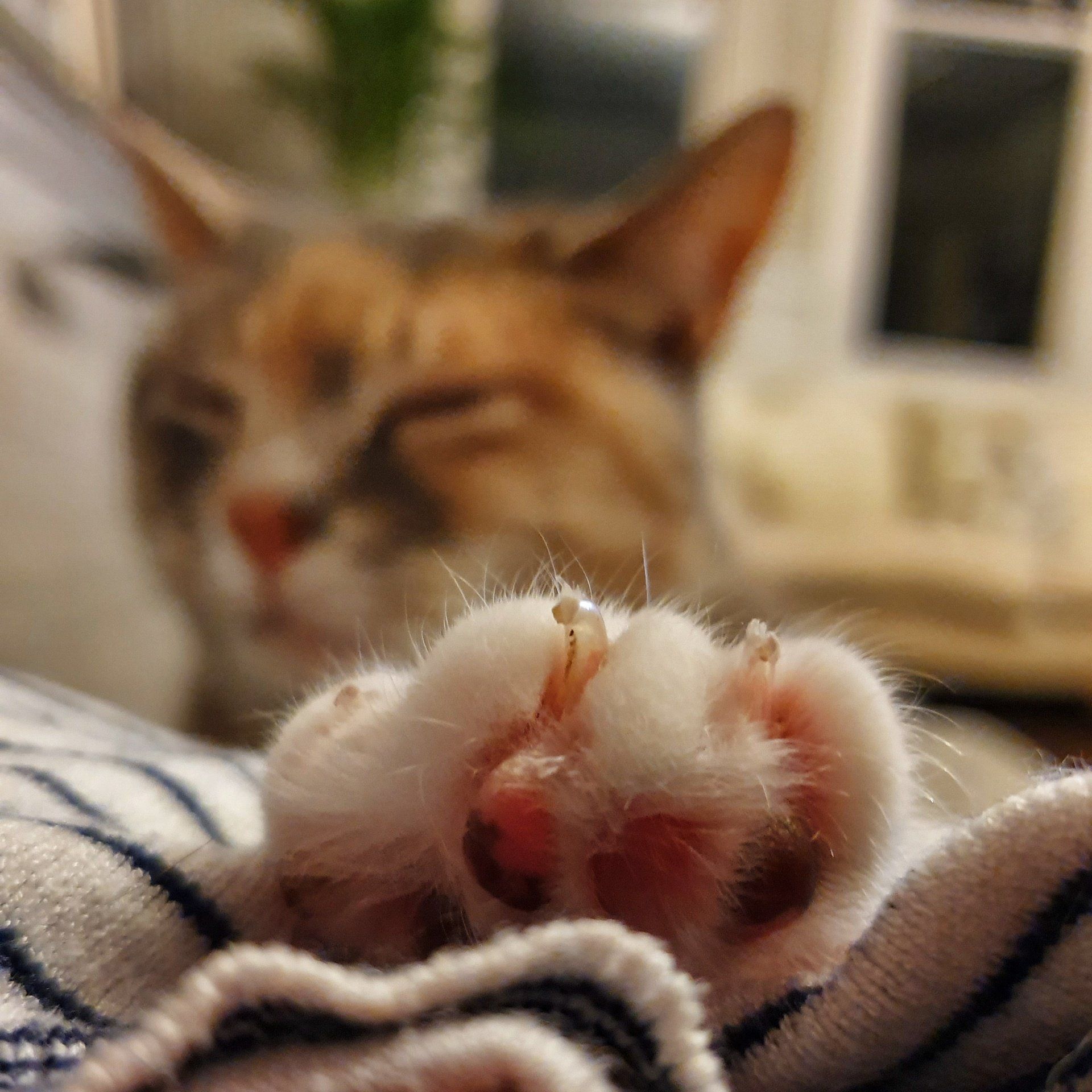Cat-Exclusive Grooming Salon in Newport Pagnell, Buckinghamshire
Blog
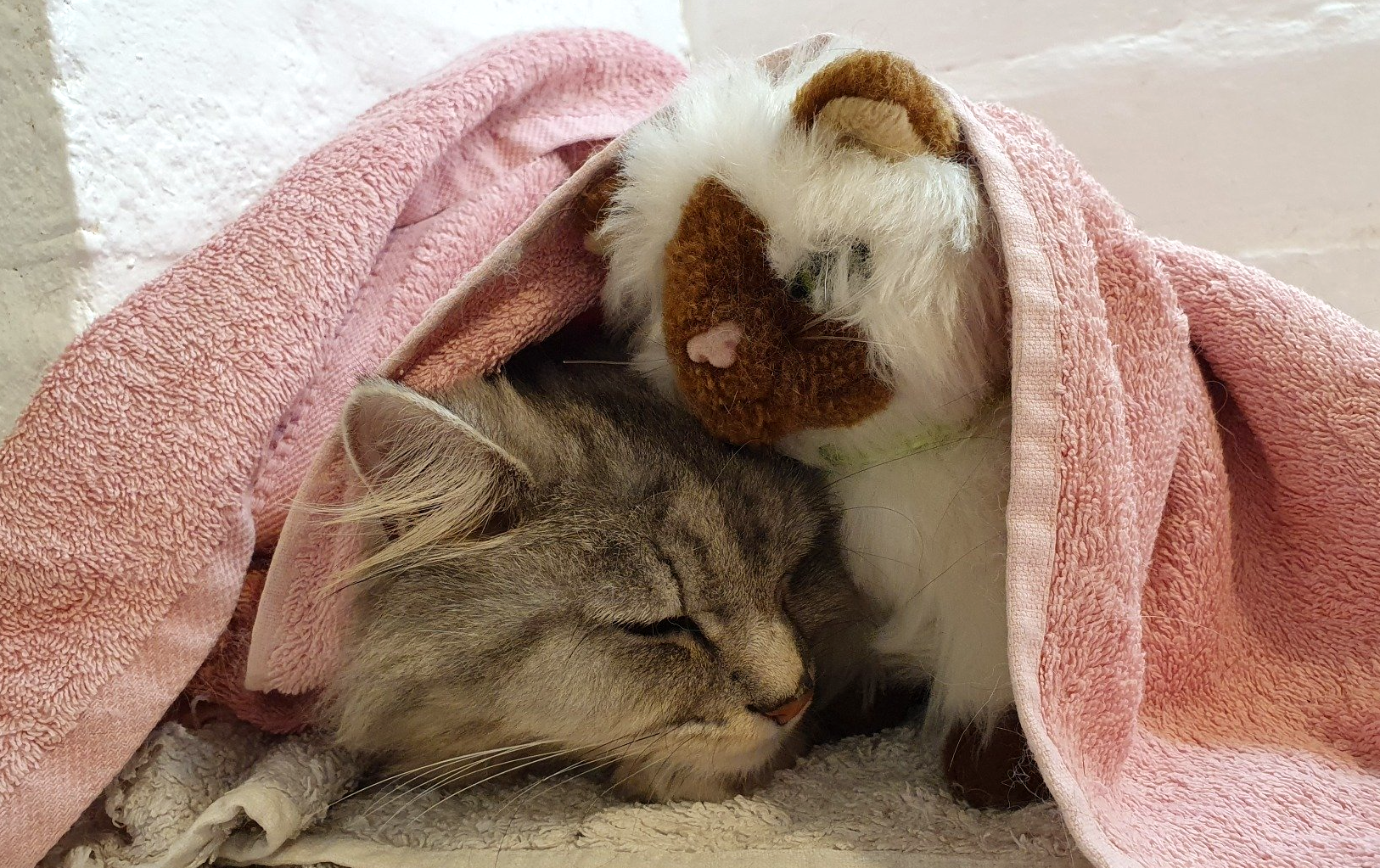
By Emma Fegan
•
21 Aug, 2021
This week marks a full 12 months since Feline Good Cat Grooming launched! We are ONE year old! It has been something of a rollercoaster, starting out in summer 2020 turned out to be rather less than ideal, with the pandemic and unpredictable - and often short-notice - lockdowns being factors I had not considered when working on my business launch in early 2020! Thankfully, as of the second lockdown, I had confirmation that pet grooming is considered an Essential Service. Therefore, after receiving Council permission each time, Feline Good has been permitted to remain operational during lockdowns. As well as being a huge relief for a new business owner, I think this is indicative of the crucial nature of the services we provide for the welfare of kitties (and peace-of-mind for their parents). With Feline Good going into its second year of life, as well as continuing to provide grooming services to our loyal regulars and new clients alike, we will be looking to grow and improve. As both the owner and (for now!) sole cat groomer for Feline Good, I have enrolled onto the newly-created OfQual-regulated Cat Grooming Level 3 Diploma. Previous to July 2021, though there have been a number of schools offering excellent training in-house (including the London Cat Grooming School, where I took my first course) there has been no OfQual standardisation and regulation for cat grooming in the UK. I signed up for the Diploma as soon as it was announced, and I anticipate that converting my current training to the new Diploma will add to my knowledge and skills, and keep my methods at the cutting edge of this fast-growing area in the pet care industry. I have also enrolled to take a 5 day advanced practical course in May 2022, to qualify for the Pet Care Trade Association-accredited Certificate in Professional Cat Grooming. I am also looking into bringing on some administrative assistance in the near future. It’s tricky for me to answer calls or emails when working full-time with kitties; they require (and deserve!) my undivided attention during their grooms and response time tends to be impacted by this. So, getting some assistance for calls and emails will improve response times and allow me to focus more on providing the best grooming care that I can, as well as allowing me more time to pursue my continuing education in cat care, psychology and grooming. I will also have a salon assistant starting with me part-time to assist me during grooms. I’m currently reviewing whether this might require a shift in the booking procedure (with new cats, very matted cats and those with tricky temperaments being booked in on certain days of the week), and will update my website as appropriate. Looking longer-term, I hope to bring on another fully trained cat groomer, allowing Feline Good to serve more clients and possibly add in the option for house-call appointments. The future is looking very exciting 😊 Finally, I would of course like to thank everyone who has supported me during my first year. My lovely clients of course, as well as my family, friends and partner who have helped spread the word, pass me shampoo bottles and advise me when things get tricky. Cuddles to all your kitties! Emma Fegan Master Cat Groomer & Owner, Feline Good Cat Grooming
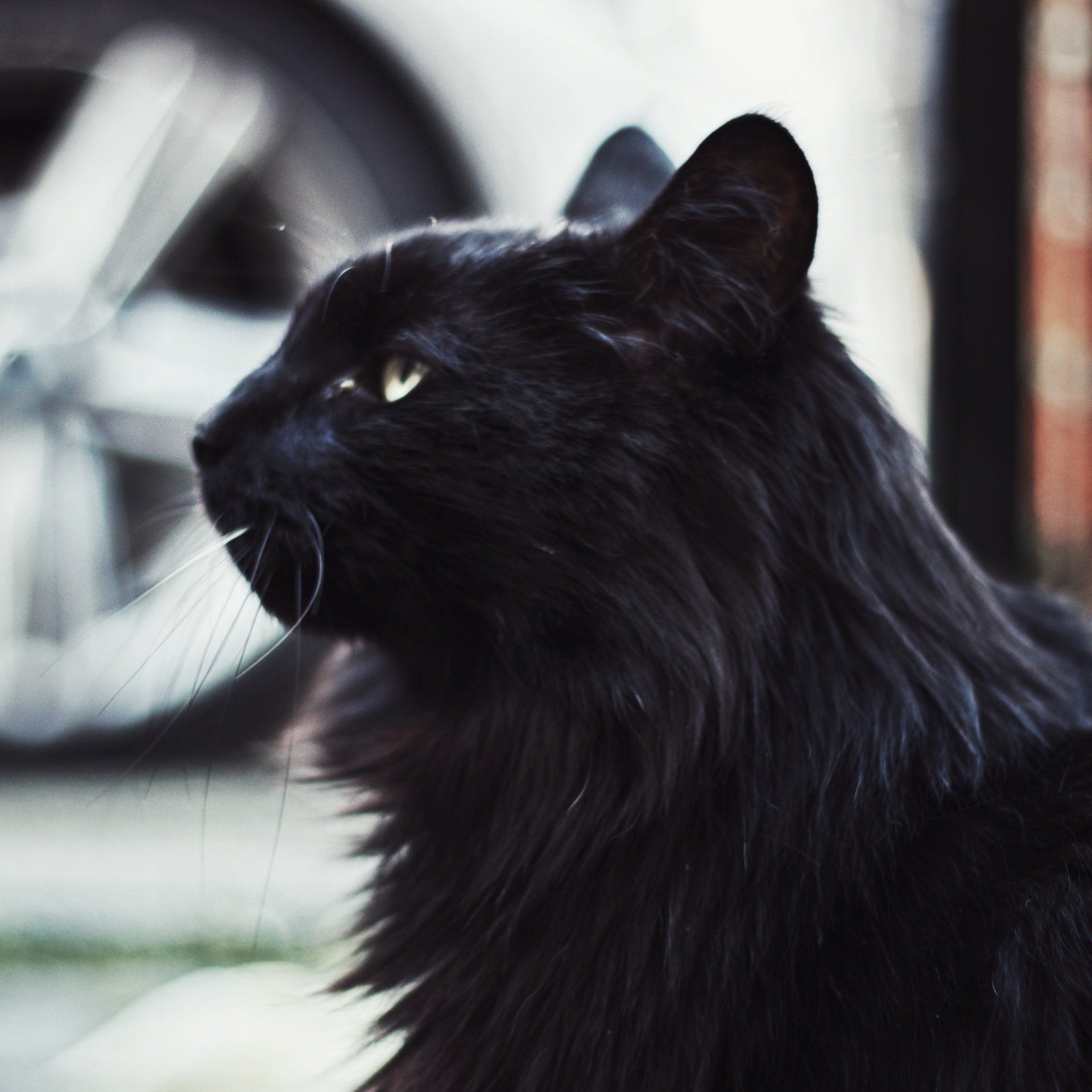
By Emma Fegan
•
07 Apr, 2021
For my first blog of 2021, I wanted to discuss frequency of grooming to keep cats in great, mat-free condition. At the end of every first groom, I chat with the cat's owners about maintenance grooming. As well as remediating existing problems (matting or pelting, as well as sanitary issues and fleas) it’s really important to me to work with my clients to prevent problems from returning. No one wants "grooming groundhog day" where I end up doing extensive de-matting on a kitty over and over again - least of all the kitty, who suffers discomfort and pain when matted. Once matting as happened once (unless it was due to a one-off such as rolling in candle wax), it will reoccur – short of a very dramatic change being implemented in their home grooming regime. A single remedial groom is not a one-stop solution to prevent matting for the rest of the cat’s life, if their coat is to remain mat-free kitty will need regular grooming on-going. Regarding frequency, at the end of the first groom I highly recommend clients get booked in to begin their cat’s preventative (or maintenance) grooming schedule. Having seen a cat just the one time, it is hard to judge the exact frequency that will be required. Therefore, I tend to set the initial interval based upon coat length and condition, and the cat’s temperament (more on this below) and then refine the interval depending upon the condition of the coat at the first preventative appointment. If kitty is still coming in badly matted, the frequency will be amended to be at shorter intervals. Conversely, if kitty is in excellent shape then the client will be given the option to extend to a longer interval. When setting the first interval, I tend to recommend up to 3 months for shorthair cats, and up to 2 months for long- and semi-longhaired cats – as a general rule of thumb. If kitty was in extremely bad grooming condition at their first groom, a 4 weekly maintenance schedule will be recommended at least for the first couple of sessions as this may be needed to get their coat back into an excellent condition. Equally, if the owner is very keen to keep kitty clean, keep shedding to a minimum, or simply wants to focus on enjoying their time at home with their furbaby rather than having to worry about doing much home-grooming, then a monthly schedule will be more appropriate. Interestingly, the colour of the cat’s fur may also be a good indicator of grooming frequency! “Dilute” coloured coats (for example, grey (or “blue”, to use the correct terminology) as the dilute expression of the black coat colour; or cream/strawberry blonde as the dilute expression of ginger (“red”) coat) are much more mat-prone than their non-dilute coloured counterparts! This is due to genetics: the gene that leads to a dilute coat colour is also linked to the texture of the coat, causing it to be more mat-prone. So grey cats, cream cats, strawberry blonde (as opposed to bright ginger) cats etc are likely to require shorter intervals between grooms. The other factor is the cat’s temperament. Cats who are aggressive during their first groom will be recommended a “little and often” schedule – generally once monthly appointments for longhaired cats, and up to 8 weekly for short hairs. The importance of “little and often” for aggressive cats is to ensure: a) They are not badly matted and therefore already in discomfort every single time they come to me (not ever a good start, especially because matted cats become hypersensitised to being touched as they are accustomed to it hurting them and can lash out to try and avoid that pain ☹ ). b) Each appointment can be completed within the cat’s “turkey timer”- IE, their window of tolerance before they become unmanageably aggressive or stressed. This window is typically a couple of hours for most cats, but in the case of some cats can be as short as 30 minutes. c) Kitty becomes used to grooming appointments as a regular, predictable and normal part of their lives. In this way, an initially aggressive cat can have the best chance to learn that grooming is not painful, not an existential threat and no reason to become aggressive. It can take a few sessions, but I have seen dramatic changes in cats’ behaviour (comparing the initial/remedial groom to subsequent maintenance grooms) when a regular and frequent schedule is stuck to. Working with cats and their owners to improve the cat's coat status and welfare is an incredibly rewarding part of what I do, and is very important to me as both a groomer and a cat-lover. If you are experiencing difficulties keeping on top of your kitty's grooming situation at home and want to get the immediate issues resolved, and keep them from reoccurring, do feel free to get in touch :) Cuddles to your kitties! Emma Fegan Master Cat Groomer & Owner, Feline Good Cat Grooming
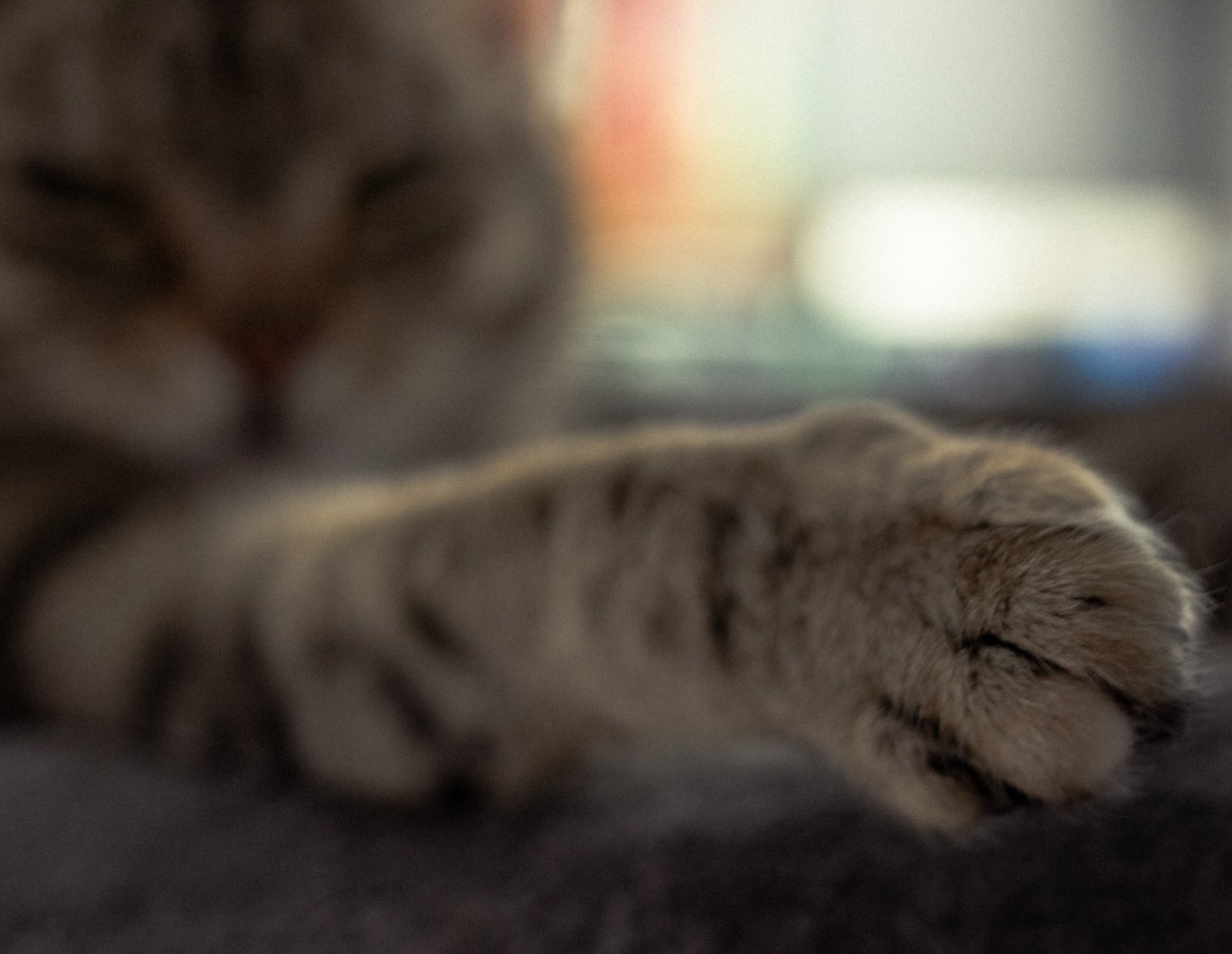
By Emma Fegan
•
21 Oct, 2020
This week marks the start of month 3 of operations here at Feline Good Cat Grooming! 2020 has been…somewhat less than the ideal (!) year to begin a new venture, but I am really pleased with how things are going and hope to continue to provide grooming services to loving catparents and their furbabies for a long time. I’m very grateful to everyone who has supported my business so far – thank you all. So, in month two Feline Good has seen a fair few matty catties come through the door, with a mix of both long and shorthaired coats. All types of kitties can require assistance with their grooming, not just the fluffy ones, and Feline Good Cat Grooming is here to help! Shorthaired cats are more frequently able to manage on their own compared with their long-haired counterparts, but many are still prone to developing large “clumps” of matted fur, particularly on their lower backs and at the base of the tail. This becomes more likely as they age and can no longer manage to reach that area themselves, and commonly first presents around 9-10 years old, even if kitty has never had a matt in their lives up till that point. Let alone, that one area of matting at the base of the tail will spread and eventually kitty will have clumps of matted fur all over their back, hips and sides – so best addressed earlier rather than later. Longhaired cats also tend more towards matting as they reach Senior ages (10 years+ or so) than they have up till then, however they are more likely than shorthaired breeds/moggies to develop matting at younger ages, in some cases even before they reach maturity at 2 years of age. Longhaired cats can matt in almost any area of their body (compared to shorthairs where 9 times out of 10 the matting is on their back/hips) - but commonly in the armpits, sanitary region, hips and belly. The necessity for (and potential expense of) proper grooming is, in my opinion, something that any prospective cat parent ought to be considering before bringing home their kitty. Breeds such as Persians, Himalayans, Siberian and Norwegian Forest Cats, Maine Coons and some Ragdolls - in particular - can require professional grooming (and/or an extremely en pointe home grooming routine) from a young age, without which they are very prone to tangles, knots and painful matting. But, as mentioned above, any cat including your shorthaired moggie might start to matt, particularly as they age. Matting causes pain due to the roots of the fur being tugged when the cat mobilises that area, and widespread matting or pelting (when matts join together to entirely cover some or all of the cat’s body) can affect or limit the cat’s ability to walk and move naturally. It is commonly observed by purrents that kitty might walk oddly after a matt removal, especially if the matting was extensive and was restricting movement of their joints, as they re-learn how to move without the constant discomfort. The skin under matts also becomes very dry and flakey (for this reason purrents may also notice dandruff in their cat’s coat after a matt removal, which improves with time as that area of skin is able to breathe again and recovers), and the tugging of the matt as kitty moves can rip small areas of the matt out at the roots leaving bald or patchy areas that become apparent after the matt is clipped out. Left long enough, cats develop painful sores and potentially life-threatening skin infections beneath matted areas. So, if you start to see your kitty’s fur getting clumpy, don’t delay getting them booked in with your friendly neighbourhood cat groomer! And to all catparents, I would encourage you to consider getting your new kitten or young adult cat on a good grooming regime now, even if their coat is currently in good condition. It will keep kitty's coat well-conditioned and beautiful and head off potential issues before they can even begin - and keep the amount of shedding in the house down too! Plus, if their coat becomes problematic in the future, kitty will already be comfortable with the grooming process, which makes for a less risky and stressful groom for both cat and groomer. Have a lovely week, and cuddles to your kitties! Emma Fegan Master Cat Groomer & Owner, Feline Good Cat Grooming

By Emma Fegan
•
14 Oct, 2020
~ Quote amended from Douglas Adams’ Hitchhiker’s Guide to the Galaxy Since I grew up both listening to the original R4 Hitchhiker's Guide series on increasingly worn audiotapes and reading the books, it was essentially mandatory for me to write about the usefulness of towels in cat grooming (as well as hitchhiking the length and breadth of the Milky Way!). Those not familiar with Hitchhiker’s Guide, please “Don’t Panic” because I will now return to my more regular topic of cats! A nice, thick towel is useful in cat grooming for 4 reasons (in addition to the need to dry kitty after a Wet Groom; but I use good quality microfibre towels for that!): 1) It serves to protect the groomer from swiping claws and biting fangs Cats can become aggressive during a groom. This is totally reasonable, after all they have been taken to a strange place (or, in the case of house calls, had a stranger come into their territory) and are experiencing new things, such as the sensation of claws being clipped, having their ears cleaned, being combed all over – even in those bits they won’t let their purrents near! – and so on. In general, cats are not huge fans of new experiences and some react to their fear with aggression. This is why cats have the reputation of being afraid of water, which in general is not strictly accurate: they are simply afraid of pretty much any novel experience, which for most cats does include being wet-bathed. Very few cats are truly hydrophobic. If kitty lashes out with claws, or (more seriously) makes attempts to bite during grooming, having a thick towel between their claws and teeth and my skin can be the difference between my being able to finish the groom with a minor or medium increase in risk compared with working with a non-aggressive cat, and my being potentially quite seriously injured. 1 in 3 cat bites result in hospitalisation, due to their needle-like fangs punching bacteria deep into the flesh and lingering even after the surface wound heals over, causing the injury to become infected. I am aware of a groomer who was once unable to work for 6 months while she recovered from a cat bite! Cat grooming is an undeniably dangerous profession, but proper use of a good thick towel can mitigate that risk significantly and that is one of the main reasons why you will always see a towel or 2 on my grooming table. 2) It can reassure the cat and help keep stress levels low Kitties like to burrow their heads under things when they feel scared. Particularly cats with a shy temperament, who are immediately identifiable at consult, as they stay right at the back of their cases trying to hide under the cushioning and blankets in there. Wrapping a shy kitty up in a towel to form a “cat burrito” can keep them calmer during the groom, they feel more hidden and so are less likely to get into a panic. Keeping stress levels low during a groom is crucial, firstly because I love cats and don’t ever want to distress them! But more seriously, because high levels of stress can actually be dangerous for cats, particularly those who may have medical conditions. A kitty with pre-existing health conditions requires a sign-off from their vet before I will carry out any kind of grooming on them; but this relies on the owner/vet being aware that kitty has a medical problem and informing me of it. Some conditions can be symptomless initially (such as the heart condition Hypertrophic Cardiomyopathy , which can have no symptoms and so go completely undetected by vets and owner, but can make the cat prone to heart attacks when highly stressed). Needless to say, if you are concerned about your cat's health, please speak to your vet immediately - and certainly before booking them in to be groomed. A cat who experiences stress during a groom is also likely to remember that experience the next time they are groomed which can lead to them becoming increasingly stressed and difficult to groom with each appointment. Instead, I aim to keep cats as calm as possible and make the groom as enjoyable as possible, resulting in kitties becoming calmer and less prone to panic and fear-aggression with each successive groom. 3) It acts as an absorbent medium for catnip spray This reason is fairly self-explanatory; I tend to use a good quality catnip spray on the towel(s) immediately before a kitty arrives. 80% of cats are rather interested in catnip and it can help to distract them from what I’m doing and help them stay calm. If a kitty is behaving in a relaxed manner, I can pop an additional spritz of catnip on the towel mid-groom, to reward them and incentivise that type of behaviour during future grooms. 4) It differentiates my grooming table from vet’s tables Cats tend not to be very fond of going to the vet! And unfortunately, the top of most grooming tables do resemble those found in most vet’s practices rather closely. Having a towel on top of part or all of it provides a point of difference, sufficient that (hopefully) kitty is not immediately triggered into “vet visit-mode” the moment they are placed on my grooming table. In a lot of cases this might not make any difference, but in a situation where a cat has had a particularly traumatic experience with a vet’s visit it might be the difference between starting the groom on a relatively good footing (“hmm, a new place and new smells, I wonder what this is all about?”), and a terrible start where the cat is immediately already extremely stressed and fearful. It goes without saying, but I will say so anyway as hygiene is of the utmost importance to myself and my clients; like all of my equipment and grooming clothing, each towel is used with only one cat before it is cleaned. So, if you were wondering why I always have at least 1 towel handy even for Full Dry Groom where there’s not a drop of water in sight, now you know! Emma Fegan Master Cat Groomer & Owner, Feline Good Cat Grooming PS: Those of you who spot the sweetpeas in the image above and are concerned that they might be nearby a kitty during a groom: don't worry! I like the scent, but they are always moved to a cat-inaccessible shelf when a cat is in the salon.

By Emma Fegan
•
28 Sep, 2020
This week, I was initially planning to write on the topic of over-the-phone quotes (specifically, why cat groomers can't - or shouldn't! - give them). However, I’ve decided that can wait for now, because we are heading into a Shedding Season! When a client first comes to Feline Good Cat Grooming, I will check them (the cat, that is!) over and provide a quote for the initial groom. At the end of the appointment I always provide the (human) client with recommendations for maintenance, and rates for maintenance beginning at the lowest price for frequent grooms and increasing as the interval between maintenance grooms increases. Typically for a longhaired coat, the maintenance groom interval I recommend is 6-8 weeks. When a kitty has a very good at-home grooming regime, an easily manageable coat – or both – that might extend to 8-10 or even 10-12 week intervals. The reason for this recommendation is not only to remove knots regularly, though the maintenance grooms will certainly include that if required. The primary reason is to remove shed undercoat from kitty’s fur on a regular basis before it can form into knots and matts in the first place. I like to think of it on the following terms: shed, trapped undercoat is “fuel for knots”. With a fair amount of shed undercoat caught up in their fur, kitty only needs one small tangle to form (this might happen spontaneously, or due to a seed or other particle of dirt caught in their fur) to act as the “spark” and the shed undercoat will just pile fuel onto to that fire, building up the tangle into a knot, and the knot into a big, painful matt that causes kitty discomfort every time they move the affected area. Regular, thorough grooming removes most of the shed undercoat – meaning that any tangles that do form in kitty’s coat don’t have as much fuel available to grow. Even if you brush your cat frequently at home, chances are good that you aren’t removing as much shed undercoat as a professional groomer can. This is not for lack of trying, it is simply a matter of training both in grooming technique and handling methods to allow the entire coat to be groomed out – even those tricky places kitty isn’t too sure about you brushing! For this reason, I recommend all cat parents bring their furbabies in for a professional groom on a regular basis. This is particularly important during the Autumn and Spring shedding seasons, when you will notice your cat shedding their seasonal coats – but whilst a lot of it ends up on your clothing, likely a considerable amount is building up in their fur! A regular grooming schedule also improves skin and coat condition, due to the products used and the boost in bloodflow to the cat’s skin during the comb-out. Plus, fur that your groomer combs out cannot be shed onto your clothes and furniture, nor swallowed by kitty during self-grooms only to be brought back up as furballs later! So if you’d like to reduce the amount of vacuuming and lint-rolling you have to do, reduce the furry build-up in your washing machine and – most importantly – keep your kitty’s coat in perfect, knot- and matt-free condition this shedding season, feel free to get in touch with your local specialist cat groomer! If you are in Bucks, Beds, Northants (or surrounds), you can check out the grooming services offered by Feline Good Cat Grooming, based in Milton Keynes, on this page . Emma Fegan Master Cat Groomer & Owner, Feline Good Cat Grooming
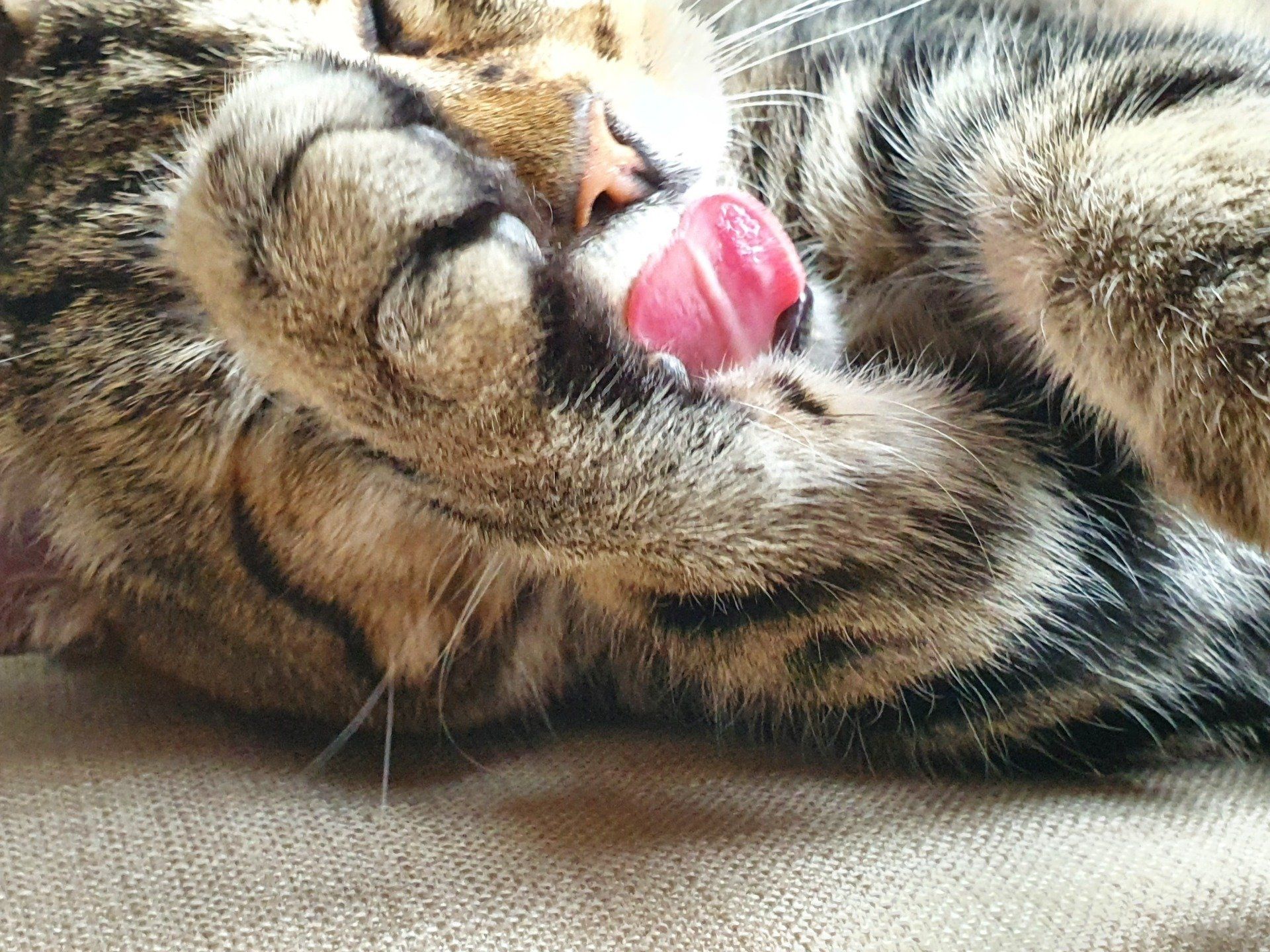
By Emma Fegan
•
14 Sep, 2020
Important Disclaimer: I am a cat groomer not a vet and so I am not allowed to diagnose or advise on medical matters for your kitty, including fleas. This post does not constitute medical advice and should not be taken as such: always, always seek the opinion of your veterinary professional and follow their advice 😊 However, as a groomer I do have clients come to me to help them eradicate their flea problem, and that is the perspective from which this is written. The groomer’s perspective When a client approaches me with their primary concern being a flea infestation, a Full Wet Groom and blow dry using anti-flea products (otherwise referred to as a “Flea Bath”) is the recommended service. A monthly flea bath regimen continued until the fleas are eradicated is best, in combination with vet-prescribed flea medication and treatment(s) of the home carried out over the same time period as directed by your vet. Alternatively, I can do Full Dry Grooms, using anti-flea dry shampoo and spray, but this is less effective than a wet bath. If a kitty client comes to me with fleas, I treat all of my equipment and clothing with flea-killer immediately afterwards to avoid the next client (or my own kitties) catching them. See the Services Page for further information on Full Wet Grooms and Full Dry Grooms. What to watch for Sourced from the RSPCA website (link to source page below), personal observation of feline clients with fleas aboard, and from speaking with their owners: 1. Your kitty is scratching and chewing at their fur much more than normal, and/or over-grooming possibly resulting in bald patches. 2. Your kitty is frequently shaking their head, or scratching at their ears. 3. You have noticed your cat is behaving differently to normal. 4. Your kitty has black flecks in their fur: flea dirt. It looks a bit like black/very dark red dandruff, but is actually blood-rich flea droppings. 5. Your kitty has developed a rash under their fur. 6. You have begun experiencing bites yourself. 7. Finally, you may have noticed tiny insects crawling or jumping about in your cat’s fur! Aside from the obvious irritation your cat will likely be experiencing, fleas can be a serious health risk to young or frail cats and they can also pass on diseases via their bites. So, what should you do? Firstly, always consult with your vet, and obtain cat-specific flea treatments and instructions for their proper use. You will also need to treat any area of your house that your cat has access too – if your cat has fleas, the chances are good that they are living in the house at large too and can survive for many months away from their host. Again, speak to your vet about the best home treatment to use and how to apply it. Only treating the cat will result in the fleas just hopping back aboard her from her bedding, furniture etc. In addition, flea baths can help speed along the process and provide your kitty immediate relief from a lot of the discomfort. Finally, once the fleas are gone your vet can advise on anti-flea treatment to apply on a regular basis ongoing to keep your kitty flea-free for good. You can read more about fleas and flea-treatment on the RSPCA website, here Emma Fegan Master Cat Groomer & Owner, Feline Good Cat Grooming PS, neither of the cats pictured have fleas, you just can't have too many cat pictures!
Training school: www.catgroomingschool.co.uk
Member #56177156 of British Isles Grooming Association: www.biga.org
© 2024
All Rights Reserved | Feline Good


